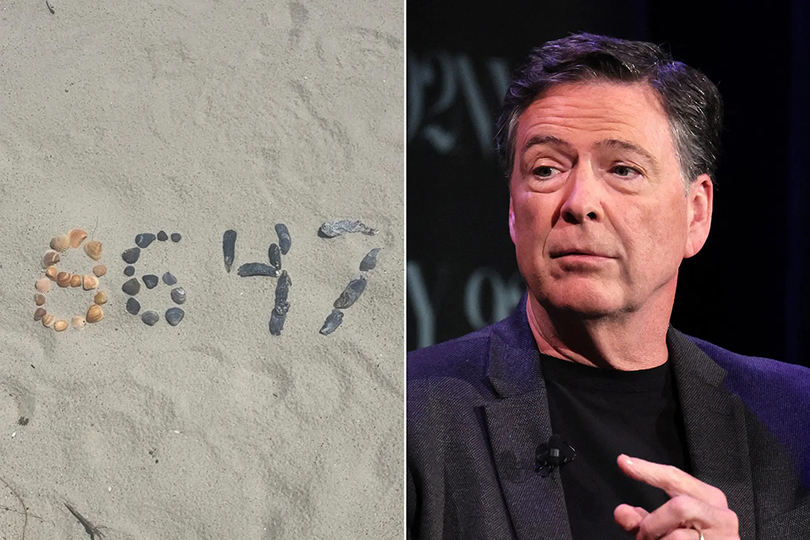By Hamza Rahim Al-Mufriji
Both the U.S. Department of Homeland Security and the National Intelligence agencies, under the supervision and follow-up of their leaders, are conducting a wide-ranging investigation into a social media post on Instagram. The post was published by former FBI Director James Comey during the presidency of Barack Obama and contains an image featuring the numbers (47 and 86). Several U.S. officials interpreted this as a call or code for assassinating the current U.S. President, Donald Trump. This is why Trump described Comey as a “corrupt cop.”
Not long ago, Trump’s 2024 presidential campaign witnessed two assassination attempts, though some consider them staged. The first attempt occurred during a rally in Butler, Pennsylvania, where a shooter fired a bullet that grazed Trump’s ear and killed former fire chief Corey Cumbria and injured two others before being killed by the Secret Service. The second attempt was foiled months later when a Secret Service agent spotted a man carrying a rifle near a golf course close to Trump’s Mar-a-Lago residence.
Months into his administration, officials from the new U.S. administration, Republican lawmakers, and Trump allies condemned the post shared by former FBI Director James Comey. The image was described by Comey as seashells on a beach forming the number “8647.” Although the post was deleted, the administration and its allies interpreted it as a clear targeting of President Donald Trump for two reasons: first, Trump is the 47th president of the United States; second, the number “86” is sometimes used as informal slang meaning “to get rid of someone or something,” according to Merriam-Webster’s dictionary. It is noteworthy that “86” has been used previously in political contexts, including by Matt Gaetz, Trump’s former candidate for Attorney General, who used the term in a post last year about Republicans he disagreed with.
The term “86” is a colloquial expression well-known in the U.S. since the 1920s and 1930s. Initially used in hospitality to indicate that a product was unavailable or sold out, it was also commonly applied to unwelcome persons to have them removed from a place. Over time, its usage spread to other areas meaning “to get rid of” someone, especially in politics.
It is worth noting that the accused of calling for the president’s assassination was dismissed in May 2017 after serving as FBI Director for ten years. Many Americans believe the dismissal was due to Comey opening an investigation into allegations that members of Trump’s 2016 campaign communicated with Russian entities. After the investigation became public, Trump fired him.
Despite the accused denying the threat in a statement: “I did not know anyone was associating this numeric arrangement with violence, and it did not occur to me when I saw the numbers. But I oppose violence under all circumstances, which is why I deleted the post,” accusations against him continue to mount. Taylor Budowich, Deputy Chief of Staff at the White House, said, “What can be clearly interpreted is a call to eliminate the current President of the United States, and this should be taken seriously.” The accused also faces allegations from Trump’s family of plotting his assassination, as Donald Trump Jr. has alluded to.
The struggle for the U.S. presidency between Republicans and Democrats will continue as long as internal divisions persist and the country faces costly commitments on multiple foreign fronts. History is filled with examples of both parties using such events for internal American propaganda, thus fueling efforts to gain public support and add legitimacy to their campaigns — including the assassination of John F. Kennedy, the Watergate scandal, the events of September 11, and the Hunter Biden case.






Comments